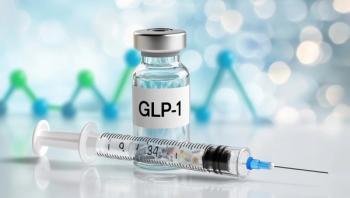
Researchers Try to Replicate Secukinumab, Ustekinumab Study With Registry Data
The study sought to understand how psoriasis treatments perform in real-world settings.
A recent comparative effectiveness study looked at secukinumab compared with ustekinumab for
This study, published in
However, both drugs had lower treatment effectiveness in the simulated real-world clinical setting than in a trial setting, hinting that psoriasis therapies may be less effective than clinical trial data have shown.
The researchers conducted the comparative effectiveness study to overcome some of the limitations of randomized clinical trials (RCTs); they noted, for instance, that head-to-head studies comparing one drug to another are rare in the pharmaceutical industry. In addition, RCTs do not fully reflect real-world outcomes, and evidence of the comparative efficacy of nonbiologic systemic therapies is lacking.
In addition to comparing the 2 therapies, the researchers sought to test whether they could repeat the relative effectiveness estimate of the
The researchers emulated a trial using data from the
The authors wrote that “a target trial emulation approach can provide robust estimates of relative effectiveness that can be used for clinical and regulatory decision-making.” Effectiveness, they wrote, is the performance of a therapy in a clinical setting, while efficacy is how a therapy performs in an ideal setting. Data such as the kind from this observational, emulated trial can help to quantify the gap between efficacy and effectiveness.
Participants had chronic plaque psoriasis, were 18 years or older, and had at least 1 record of a PASI score of 12 or higher before beginning secukinumab or ustekinumab.
The study was performed between November 2007 and August 2019. The primary outcomes were the risk ratio (RR) and the risk difference (RD) for achieving PASI of 2 or lower after 12 months of therapy for secukinumab compared with ustekinumab. The researchers used propensity score (PS) 1:1 matched analysis and inverse probability treatment weighted analysis to account for potential confounding between the 2 groups.
Only eligible participants with no missing baseline data for the potential confounders were included in the final analysis; if outcome data were missing, the outcome was imputed as a nonresponder after 12 months of treatment if the treatment ended before that time point (whether for ineffectiveness or for an adverse event). The outcome was credited as a responder if the treatment was discontinued after 12 months because of disease remission.
A total of 1231 patients were analyzed, with 917 receiving ustekinumab and 314 receiving secukinumab. In all analyses except under the nonresponder imputation method, secukinumab was superior to ustekinumab in the proportion of participants achieving a PASI of 2 or lower (PS-weighted complete case analysis: RR, 1.28; 95% CI, 1.06-1.55; RD, 11.9%; 95% CI, 1.6-22.1).
All analyses reached regulatory agreement in both PS-matching and PS-weighted analyses (except for nonresponder imputation) with the CLEAR RCT. The estimate of the superior effectiveness of secukinumab also met the estimate agreement with the CLEAR trial.
Taking the point estimate from the complete case analysis under PS weighting, the researchers found a 17.5% reduction for secukinumab and a 15.1% reduction for ustekinumab between efficacy and effectiveness using the 12-month end point, with secukinumab having statistically superior effectiveness compared with ustekinumab.
This study was the first to use a target trial approach in comparative effectiveness research of systemic therapies for psoriasis, the authors asserted.
Reference
You ZZN, Mason KJ, Hampton PJ, et al. Randomized trial replication using observational data for comparative effectiveness of secukinumab and ustekinumab in psoriasis: A study from the British Association of Dermatologists Biologics and Immunomodulators Register. JAMA Dermatol. 2021;157(1):66-73. doi:10.1001/jamadermatol.2020.4202
Newsletter
Stay ahead of policy, cost, and value—subscribe to AJMC for expert insights at the intersection of clinical care and health economics.




























































